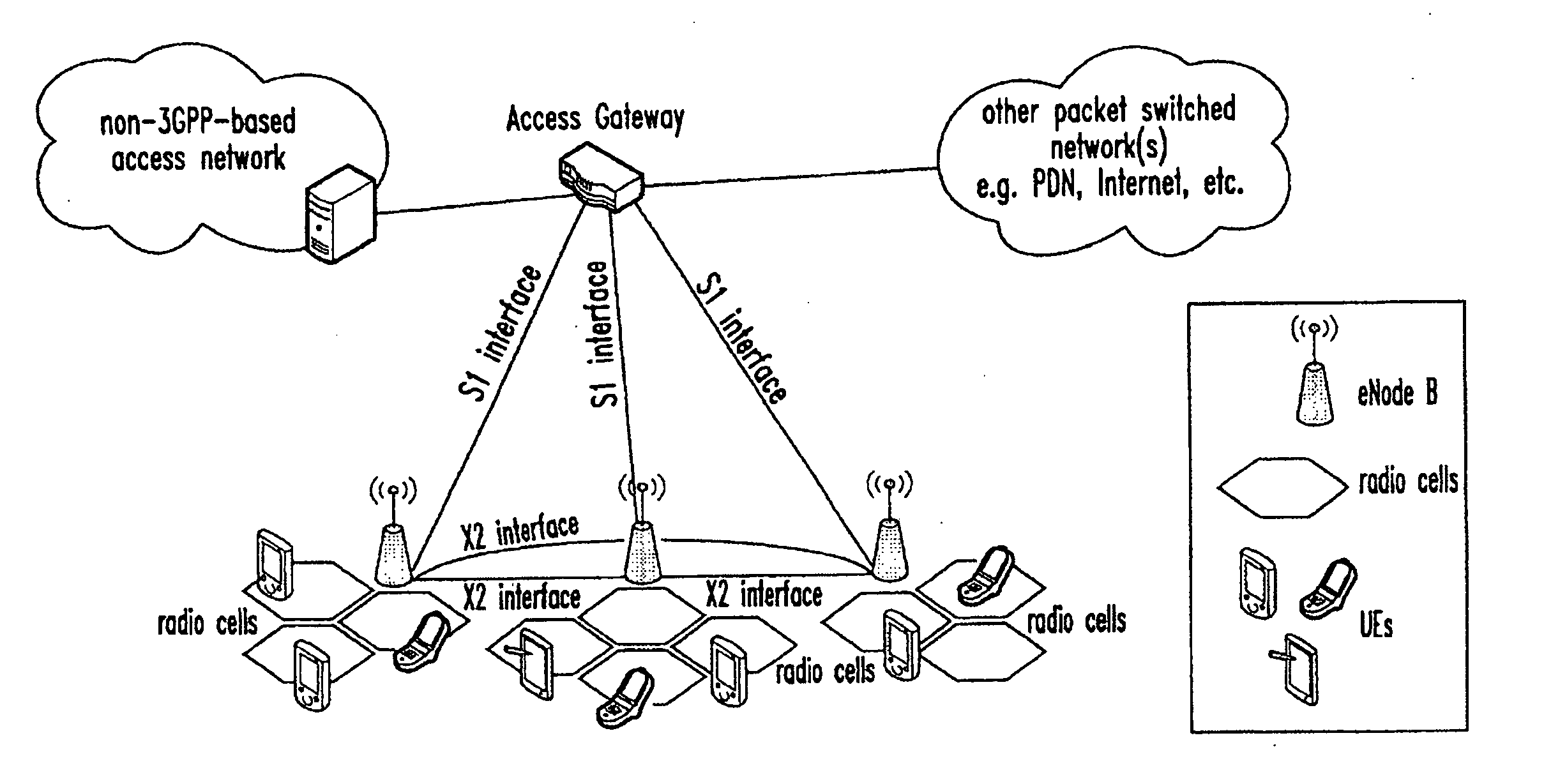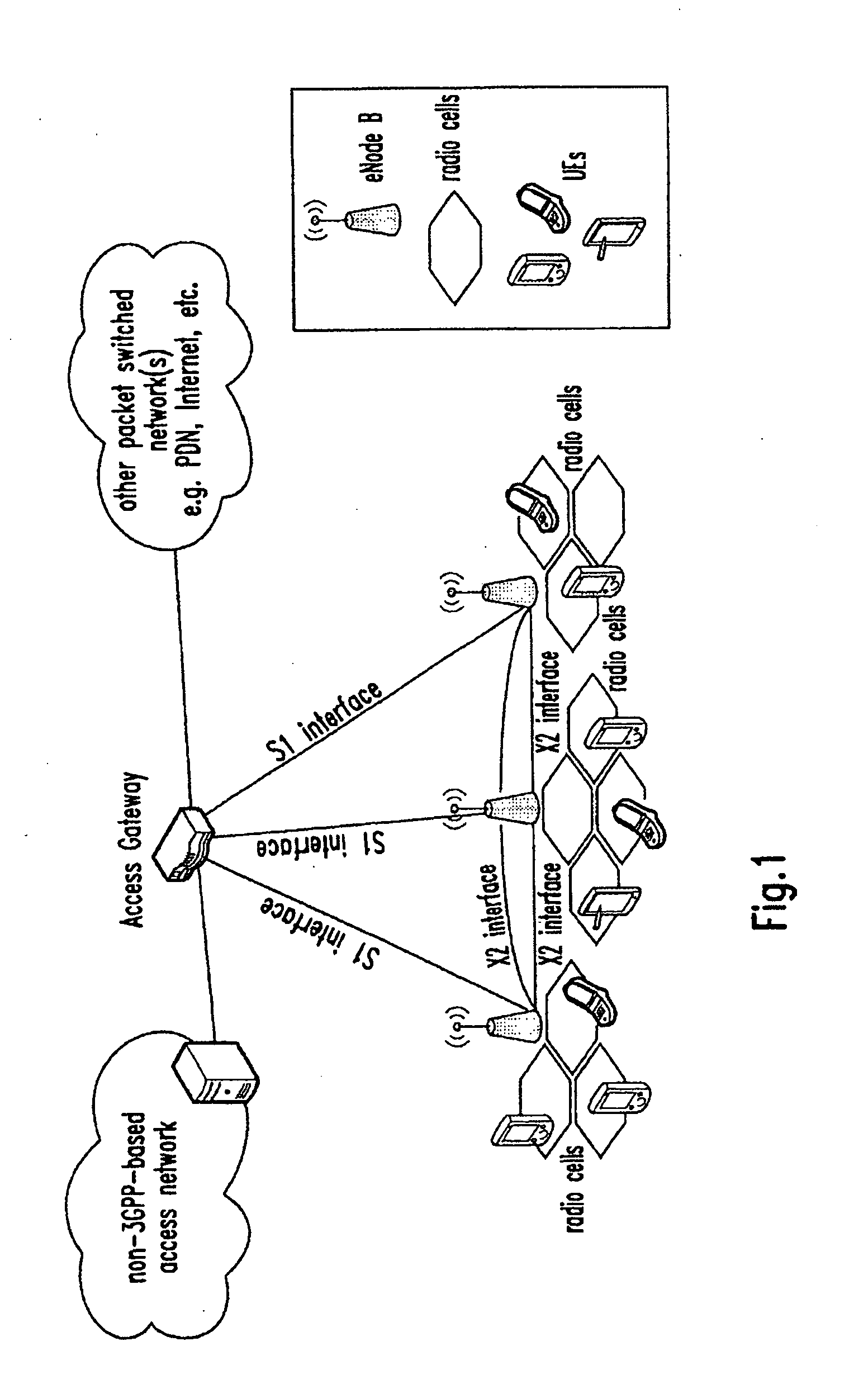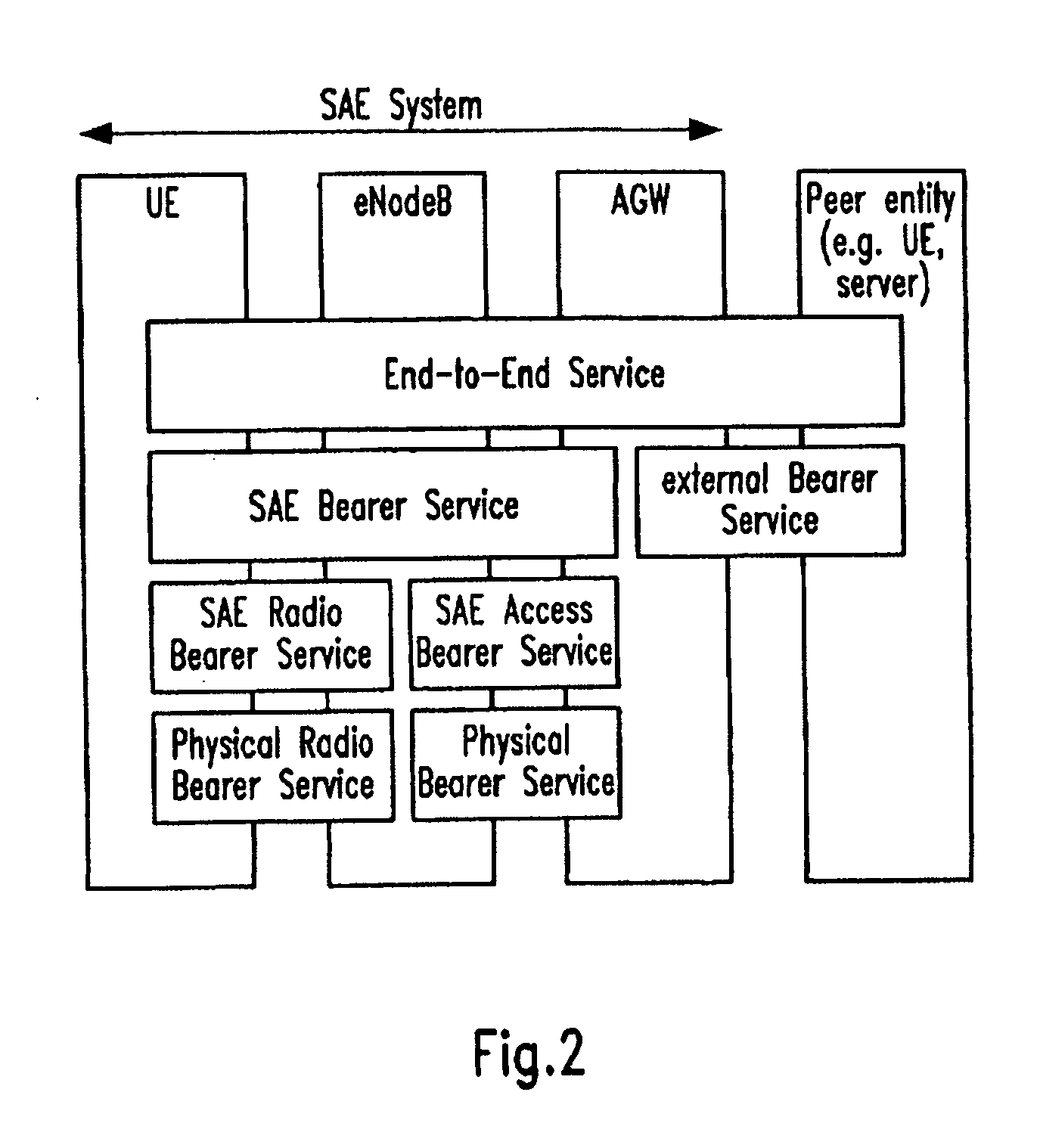Method for supporting quality of service over a connection lifetime
a technology of quality service and connection lifetime, applied in the direction of electrical equipment, wireless communication, etc., can solve the problems of starvation of low priority applications and the possibility of reducing the efficiency of solutions
- Summary
- Abstract
- Description
- Claims
- Application Information
AI Technical Summary
Benefits of technology
Problems solved by technology
Method used
Image
Examples
first embodiment
[0167]According to the invention, the unit forwarding the QoS measurements to the target eNodeB, i.e. the UE or source eNodeB, forwards the measured provided bit rate for all or a subset of the plurality of configured radio bearers.
second embodiment
[0168]According to the invention, only an indication whether the total number of bits per radio bearer transmitted successfully per time duration is smaller than a threshold is signalled to the target eNodeB. In the following, a STATE parameter is described. As indicated in the table below, the STATE parameter could indicate whether the measured provided bit rate is less than or higher than a minimum bit rate configured for the relevant radio bearer. The minimum bit rate would be a QoS parameter configured per radio bearer by the network, for example as part of the QoS profile. This option would only require the signalling of 1 bit per radio bearer for the QoS measurement reports.
STATE FlagMeaning0Provided bit rate is less than configured minimum bit rate1Provided bit rate is greater than or equal to the configuredminimum bit rate
[0169]Transmitting a STATE parameter instead of the actual measured provided bit rate provides the advantage of reducing the signalling overhead of the rep...
third embodiment
[0170]According to the invention, the unit forwarding the QoS measurements, i.e. the source eNodeB or the UE, reports within the QoS measurements a preferred priority order of the distribution of allocated radio resources by the mobile node to the configured radio bearers. This preferred priority order could be a suggested QoS indicator that indicates an appropriate QoS indicator after radio cell change based on past transmission characteristics in order to meet the QoS requirements.
[0171]In the first embodiment, the target eNodeB determines a QoS indicator based on the reported provided bit rate measurements, whereas in the third embodiment the source eNodeB or the UE determines the QoS indicator “in advance” based on the provided bit rates that they measured and then signals only the indicator to the target eNodeB. Hence, the signalling overhead can be reduced.
[0172]The different possible implementations for the reporting of the measured QoS parameter represent a trade-off between...
PUM
 Login to View More
Login to View More Abstract
Description
Claims
Application Information
 Login to View More
Login to View More - R&D
- Intellectual Property
- Life Sciences
- Materials
- Tech Scout
- Unparalleled Data Quality
- Higher Quality Content
- 60% Fewer Hallucinations
Browse by: Latest US Patents, China's latest patents, Technical Efficacy Thesaurus, Application Domain, Technology Topic, Popular Technical Reports.
© 2025 PatSnap. All rights reserved.Legal|Privacy policy|Modern Slavery Act Transparency Statement|Sitemap|About US| Contact US: help@patsnap.com



